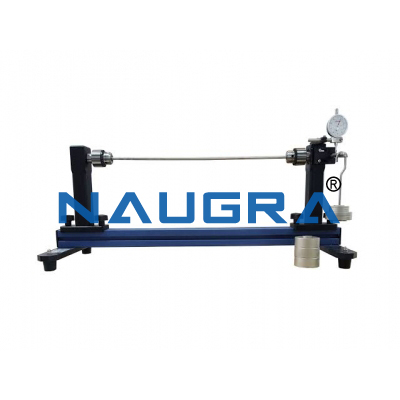- Workshop Tools and Workshop Machines India: buy@naugra.com

Torsion Of Bars Apparatus .
Torsion Of Bars Apparatus
Features
Low cost effective teaching
Self-contained
Bench-mounted
Direct application of torque and measurement of angle of twist
Determination of modulus of rigidity for different materials
3 year warranty
Range of Experiments
To measure the angle of twist produced by torsional loads for various specimens and verify that the relationship is linear.
To determine the modulus of rigidity for specimens of various materials
Description
Torsional
loads are common in power transmission shafts, and in certain cases can
also occur in structural members. It is thus very important that
engineers understand the relationship between the torsional load applied
to a particular beam and the angular twist produced. Also, engineers
must understand how this relationship varies with the material from
which the beam is made and its cross sectional polar moment of area.
This apparatus allows these relationships to be investigated directly.
Specimens
are rigidly held in a clamp fixed to one end of the base frame of the
apparatus. A short shaft mounted in the bearing has a three jaw chuck
facing the clamp and a torsion head at the outward side. The torsion
head and chuck are used to apply torsional loads to the specimen. A
rotation scale and pointer can be attached to any point on the
specimen's length to find the angle of twist of the specimen. Four
specimens are provided as standard, namely :
Mild steel rod 460 x 5mm dia.
Brass rod 460 x 5 mm dia.
Aluminium alloy rod 460 x 4.76mm dia.
Nylon rod 460 x 6.35mm dia.
This
equipment is part of a range designed to both demonstrate and
experimentally confirm basic engineering principles. Great care has been
given to each item so as to provide wide experimental scope without
unduly complicating or compromising the design. Each piece of apparatus
is self-contained and compact. Setting up time is minimal, and all
measurements are made with the simplest possible instrumentation, so
that the student involvement is purely with the engineering principles
being taught. A complete instruction manual is provided describing the
apparatus, its application, experimental procedure and typical test
results
